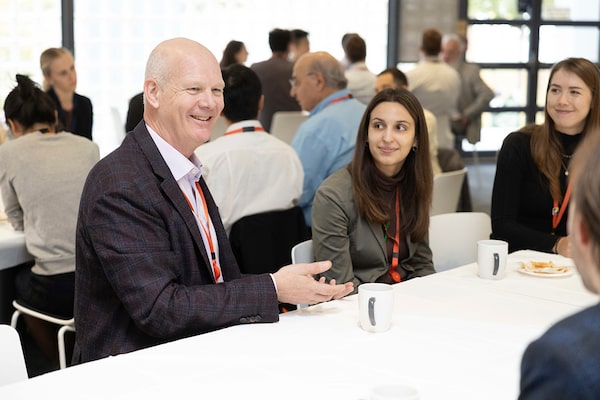
Hatch members of the board of directors regularly meet with young professionals for mentorship and networking.Supplied
Right after completing her engineering degree, Safaa Azammam embarked on her dream job at Hatch Ltd. – planning and designing tunnels for Montréal’s biggest public transit project in more than half a century.
While studying civil engineering at Montréal’s École Polytechnique, she decided she wanted to specialize in underground construction for tunnels and knew the global engineering and professional services giant had a good reputation in the industry.
“As a young professional in tunnelling, you have to learn it in the field – it is not learned in school,” she says. “I had the opportunity with Hatch to work on this big project and to be supported by colleagues with different expertise.”
In 2016, immediately after being hired by Mississauga, Ont.-based Hatch, she joined its Montréal office working on a light rail transit (LRT) project. After determining where to put tunnels for the electric rail network, she then moved onto the design and specifications for the project’s tender phase. She later moved onsite where she provided expertise during construction. The project included constructing a three-kilometre tunnel to Montréal-Trudeau International Airport.
“I learned a lot on this project. We started with an idea and now I am proud to see what we’ve done,” Azammam says.
Fostering continued learning is essential to Hatch’s success, says Lynn Iturregui, a Sudbury, Ont.-based project manager and sponsor of mining projects. Having joined Hatch after completing her civil engineering and management degree at McMaster University more than 26 years ago, Iturregui was the recipient of mentorship and technical guidance and is now in a position to provide it to others. She is also actively involved with Hatch’s campus recruitment and scholarship initiatives, particularly with her alma mater.
“Mentorship is how we grow our family. We think of our company as a family,” Iturregui says. “So much of our organization’s success is driven by our ability to work similarly – similar processes, similar mindset, interfacing with our clients, thinking like owners, nurturing those long-term relationships. All of that is building blocks for meeting our clients’ needs.”
From day one, new hires at Hatch are mentored. Each one is assigned a Hatch buddy for onboarding support, as well as a direct supervisor who provides more hands-on, daily guidance. New employees also have the opportunity to join online mentorship circles to connect with a mix of people who have been with the organization a similar length of time and are from a variety of different regions and business units.
Hatch’s leadership team encourages a flat, connected organization around the globe so there are no barriers to connectivity from junior engineers in training to the CEO.
“We are very proud that you won’t find an org chart within our organization. We think of it as a matrix,” Iturregui says.
Much of the connectivity and mentorship that happens at Hatch takes place in person in the office. The pandemic showed how essential human interaction is to the organization’s creativity, innovation and ingenuity, Iturregui says.
“We do stress for people to be in the office to connect with others, share what you know, be prepared to hear what other people have to share and be open to the possibilities.”
As a young female engineer, Azammam is excited about the possibilities and is thankful for the support she receives from her senior colleagues who allow her to take ownership of projects. “Hatch wants to promote and to invest in young professionals,” she says. “I would like to expand my career development to take on more leadership challenges, to be part of the next generation at Hatch.”
More from Canada’s Top Young People Employers
Advertising feature produced by Canada’s Top 100 Employers, a division of Mediacorp Canada Inc. The Globe and Mail’s editorial department was not involved.